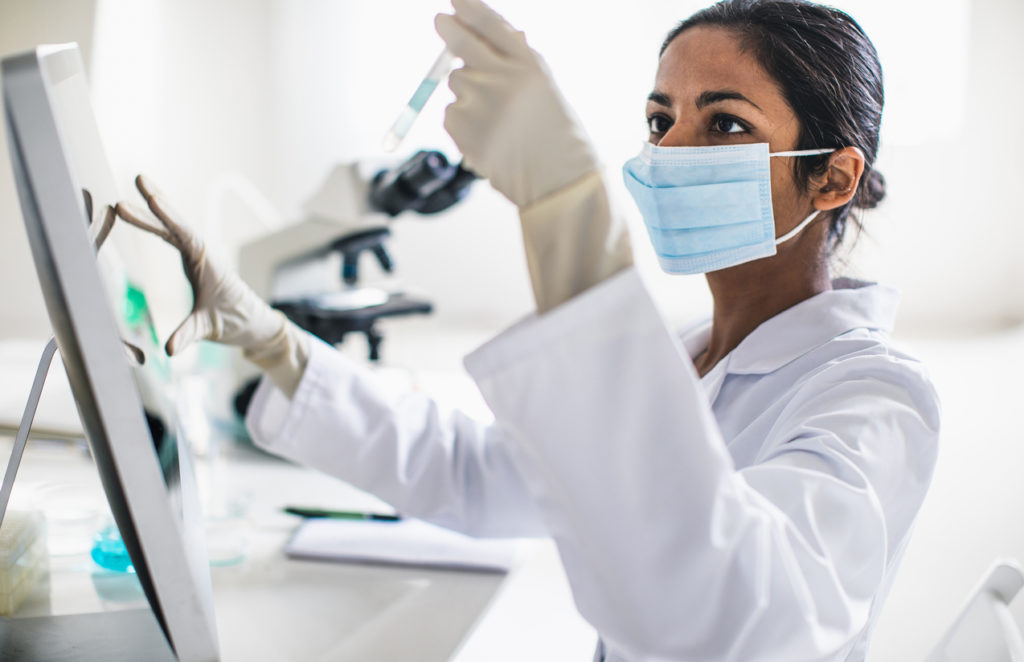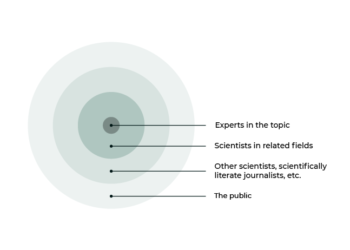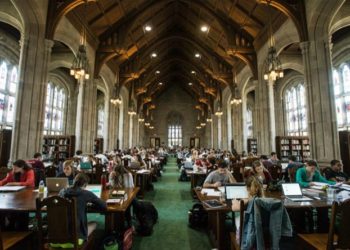Editor’s Note: Today’s post is by Swarnali Bhattacharya and Ashley Fernandes, publishing professionals at Enago Academy. They are actively involved in developing comprehensive and easy-to-understand resources for researchers and assisting them in their publication journey. Through the Global Risk Assessment initiative, they are also working on identifying, assessing, and raising awareness of global risk factors that potentially affect the researcher community.
Like many sections of society, the research community has suffered a severe blow during lockdown. Many research laboratories have been shut down indefinitely, leaving the fate of their studies uncertain. While some researchers found it difficult to strike a work-life balance when working from home, others found it tough to feel motivated enough to complete their research documentation. At Enago (full disclosure, our employer), we are conducting and planning several activities to understand the long-term impacts of the global pandemic on various aspects of the research ecosystem.

A Light at the End of the Tunnel, but a Difficult Path to Navigate Still
As lockdown restrictions gradually begin to ease in several countries, we can now see the light at the end of the tunnel as laboratories begin reopening. According to an online poll conducted by Nature in May 2020, just under 50% of the 3,000 researchers who responded mentioned that they are still under lockdown. Among the list of countries with the most respondents, Germany had the highest proportion of researchers who had already returned back to their labs. As researchers across the globe gear up to restart their research and gradually resume their regular schedules, they realize that daily operations under the “new normal” might not be the same as before.
Laboratory directors and university management face several challenges in determining how and when research labs can be opened while also ensuring no resurgence in new virus cases. Strict guidelines for restarting lab operations have been put in place by institutions for researchers. However, these guidelines vary among universities from different geographies. For example, according to cell biologist Paolo Bernardi from the University of Padua in Italy (interviewed by Nature), the guidelines are much stricter than those seen elsewhere. Researchers are required to maintain a distance of 1m between each other during brief contact. This distance increases to 2m when occupying the same room for more than 15 minutes, with no more than 3 people in the same room at any time. Masks have to be worn at all times and gloves are mandatory in the lab.
Similarly, researchers at the University of Groningen, in the Netherlands, have been asked to follow additional guidelines. According to Jana Volaric, a synthetic organic chemist working in the university (interviewed by Nature), some of these new rules include steering clear of any work involving hazardous chemicals if possible, thereby minimizing the risk of spills that would require medical attention, and so on. Some guidelines, however, are common, irrespective of the geography. These include prohibition of gatherings of any kind, such as lab meetings and lectures. All such meetings or discussions need to be held on virtual platforms only.
Most laboratories will have to operate with just a few individuals present at the start, working in staggered shifts. Sub-teams with distinct schedules need to be created to reduce density in labs and limit contact across different teams. Such schedules can involve working on weekends and late at night or on alternate days or early in the morning. Teams also need to share responsibilities and determine research priorities with the help of their supervisors so that expectations and plans can be adjusted, keeping in mind the reduced laboratory time.
Role of Research Institutions and Their Limitations
New protocols for researchers’ health and welfare, distance restrictions, use of personal protective equipment, and frequent cleaning of the lab premises must be implemented before researchers resume daily operations. Some universities and institutions have also setup robust daily symptom screening systems and testing programs for their workforce to reduce the risk of infection. In addition, lab directors and principal investigators (PIs) are required to maintain a daily log with the details of all persons who have accessed the labs including vendors. All research personnel have to complete a screening survey and update the daily log before entering the lab, while those with a potential risk of being infected need to be tested regularly to prevent any cases from going undetected.
Furthermore, if researchers want to report any concerns, anonymous reporting forms are being made available to highlight such concerns to laboratory directors. Special precautions need to be taken while conducting clinical trials and during interaction with patient subjects. Currently, most universities across the globe have paused all high risk research that involves human subjects. Before resuming activities with human participants, universities are putting in place strict human research activation procedures for all critical studies. To better ensure safety, human research studies will be activated in a tiered approach and all research personnel involved have to follow guidelines to confirm compliance as well as undertake comprehensive training modules before being allowed to interact with human participants.
All of this increases the costs associated with doing research. And yet, according to a recent survey conducted by Enago, around 35% of universities have cut budgets as a result of the pandemic. On the positive side, around 54% of universities have not had any significant changes in their research budgets for this year. This validates the fact that despite the economic slowdown, many countries still consider research and education as a priority. Although the long-term impacts of the current crisis on funding are unknown, 50% of universities in the survey feel that one of the immediate impacts will be the decrease in admission of international students.
Universities are expected to lose billions of dollars because of drops in student admissions and the associated tuition fees from international students. Australian universities warned that up to 21,000 full-time jobs including 7,000 from research are at risk. These financial implications as a result of the pandemic might cause smaller universities and institutes to shut down permanently while other universities and funding bodies turn their focus to research projects that serve national interests. On the other hand, Germany has committed to invest an additional USD 18 billion in science till 2030, while China plans to invest more in biology and epidemiology in the coming years. In the US, a coalition of research universities has asked Congress for USD 26 billion to support the scientific workforce and get research going again.
Road Ahead for Researchers and Laboratories
According to Kirsty Anderson, an organic chemist at the University of Auckland, New Zealand (interviewed in Nature), she and her lab colleagues have had to work in even- and odd-hour rotations to meet the university’s safety requirements. Similarly, Christian Haass, a neuroscientist at the Ludwig Maximilian University, Munich (interviewed in Science) who oversees around 120 people, was allowed to resume lab operations with only one-quarter of the workforce. His researchers have been working on weekends and late at night to complete their experiments. Other scientists who need animal models for their studies are already finding it difficult to obtain them as there are heavy restrictions on deliveries of any kind by local governments.
Furthermore, many early career researchers who were pursuing their PhDs and working on research projects abroad were forced to return home during the pandemic. To prevent researchers from being professionally derailed by the pandemic, many institutions are extending tenure clocks, providing additional funding for graduate students, and also creating new job positions that would allow postdocs to stay longer. However, some scientists will still be reluctant — or unable — to return. This will definitely be a major setback for the global research community.
Keeping Hopes Alive
Amidst all the uncertainties and challenges, maintaining a regular schedule, both at home and work, can be both a driver of productivity and a great psychological relief. People will need to understand and adapt the new normal and take more precautions, not only for their own safety but also for their loved ones at home and the public in general. As we continue to work on our Research Risk Assessment program, we plan to report major findings and observations related to labs and also provide some insights that we hope will benefit the research community, from personal implications of donning safety gear at all times to supply chain issues related to animal models.
Discussion
1 Thought on "Guest Post — Reopening Laboratories: What the New Normal Means for Researchers"
Thanks so much for sharing this perspective – we don’t often talk about the process of science on the Kitchen, and this is a great reminder of the challenges that some of the researchers we support (and their institutions) are facing.



